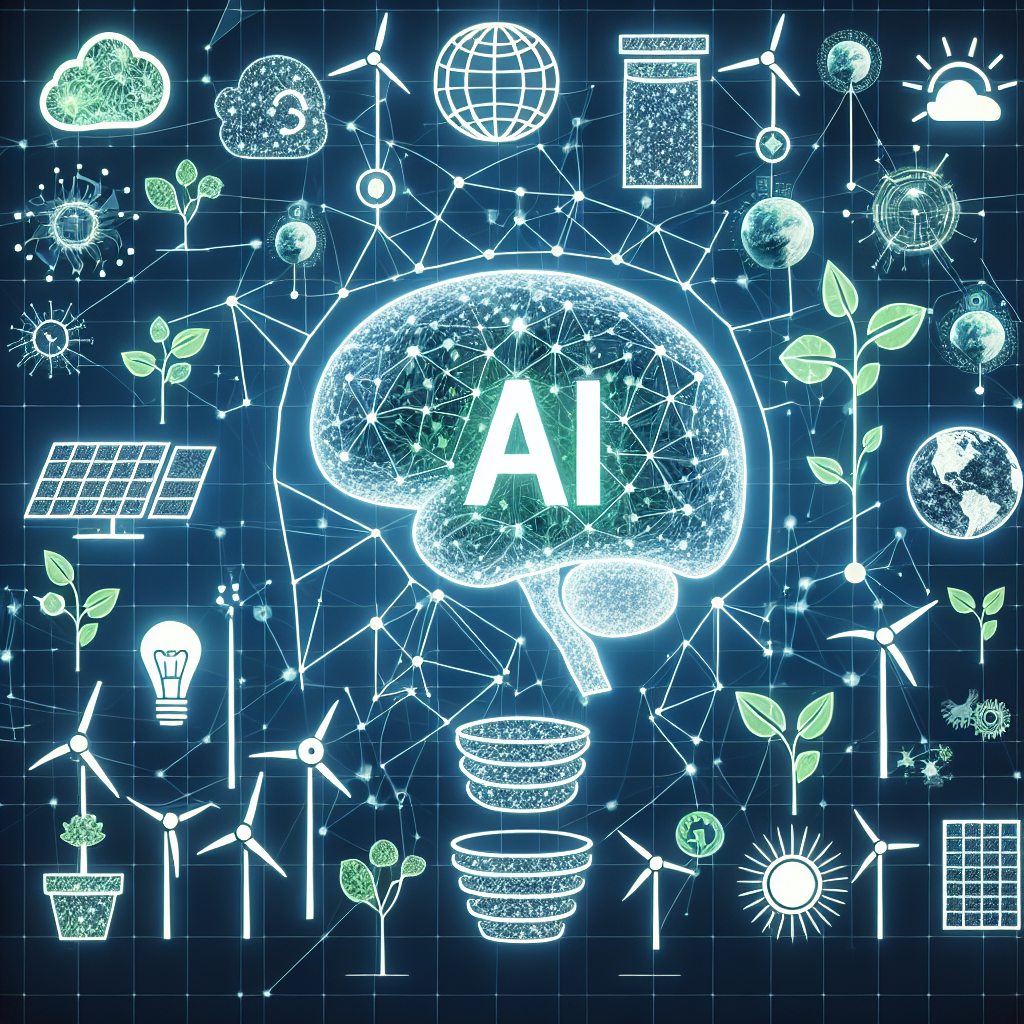Artificial intelligence (AI) is revolutionizing many industries, and one of the most pressing issues that it is being applied to is climate change. As the world faces the growing threat of climate change, AI technologies are being deployed to help advance sustainability efforts and mitigate the impacts of global warming. In this article, we will explore how AI is being used in the fight against climate change, the benefits of its deployment, and the challenges that come with integrating AI into sustainability initiatives.
AI Deployment in Climate Change
AI technologies are being used in various ways to address the challenges posed by climate change. One of the key areas where AI is making a significant impact is in the field of renewable energy. AI algorithms are being used to optimize the efficiency of renewable energy sources such as solar and wind power. By analyzing data on weather patterns, energy consumption, and grid demand, AI systems can predict when and where energy will be needed most, allowing for more efficient distribution and storage of renewable energy.
AI is also being used to improve the efficiency of energy-intensive processes in industries such as manufacturing and transportation. By analyzing data on energy usage and production, AI systems can identify areas where energy consumption can be reduced or optimized, leading to significant cost savings and reductions in greenhouse gas emissions.
Another area where AI is being deployed in the fight against climate change is in climate modeling and prediction. AI algorithms are being used to analyze vast amounts of data on climate patterns, sea levels, and other environmental factors to create more accurate models of how the climate is changing and how it will continue to change in the future. These models can help policymakers and planners make more informed decisions about how to adapt to and mitigate the impacts of climate change.
Benefits of AI Deployment in Climate Change
The deployment of AI in climate change initiatives offers several key benefits. One of the most significant advantages of using AI technologies is their ability to analyze vast amounts of data quickly and efficiently. This allows for more accurate and timely insights into the complex and interconnected factors that contribute to climate change. By harnessing the power of AI, researchers and policymakers can better understand the causes and impacts of climate change and develop more effective strategies for addressing them.
AI technologies also have the potential to enhance the resilience of communities and ecosystems in the face of climate change. By analyzing data on weather patterns, natural disasters, and other environmental factors, AI systems can help identify vulnerable areas and populations and develop targeted interventions to reduce their exposure to climate-related risks. This can help communities adapt to changing environmental conditions and minimize the impact of extreme weather events and other climate-related disasters.
Challenges of AI Deployment in Climate Change
While the deployment of AI in climate change initiatives offers many benefits, it also presents several challenges. One of the main challenges is the complexity of the data and models used in climate change research. AI algorithms are only as good as the data they are trained on, and in the case of climate change, the data can be highly uncertain and subject to bias. This can lead to inaccurate or misleading results, which can have serious consequences for decision-making and policy development.
Another challenge is the ethical implications of using AI in climate change initiatives. AI technologies raise concerns about privacy, transparency, and accountability, particularly when they are used to make decisions that affect people’s lives and livelihoods. There is also the risk that AI systems could perpetuate existing biases and inequalities, leading to unfair or discriminatory outcomes for certain groups of people.
FAQs
Q: How is AI being used to promote sustainability in agriculture?
A: AI technologies are being used in agriculture to improve crop yields, reduce water usage, and minimize the use of pesticides and fertilizers. By analyzing data on soil quality, weather patterns, and crop health, AI systems can provide farmers with real-time insights and recommendations for optimizing their farming practices.
Q: Can AI help to reduce carbon emissions in the transportation sector?
A: Yes, AI technologies are being used to optimize transportation systems and reduce carbon emissions. By analyzing data on traffic patterns, vehicle efficiency, and alternative fuel options, AI systems can help cities and transportation companies develop more sustainable and efficient transportation solutions.
Q: How can AI be used to improve waste management and recycling?
A: AI technologies are being used to optimize waste collection routes, identify recyclable materials, and reduce waste generation. By analyzing data on waste disposal patterns, recycling rates, and landfill capacity, AI systems can help municipalities and waste management companies develop more effective waste management strategies.
In conclusion, the deployment of AI in climate change initiatives offers great promise for advancing sustainability and mitigating the impacts of global warming. By harnessing the power of AI technologies, researchers, policymakers, and communities can better understand the complex factors contributing to climate change and develop more effective strategies for adaptation and mitigation. However, the integration of AI into sustainability initiatives also presents challenges, including data complexity, ethical considerations, and potential biases. By addressing these challenges and leveraging the capabilities of AI, we can harness the full potential of technology to create a more sustainable and resilient future for our planet.

